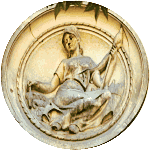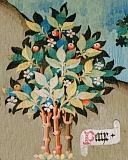|
T HE NATIONAL MANUFACTURES OF THE GOBELINS, BEAUVAIS & THE SAVONNERIE
Hugues Menes speaker to the manufacture of the Gobelins
BEAUVAIS


Founded in 1664 in the town of Beauvais, manufacture answers at this time to the private requests of kind of product same as those in the style of the king;
it also competes, situated in the cutting road of Paris, with the Flemish imports. Very brilliant, the production specializes at the XVIIIth century in furnishing
fabrics, smaller, as seat covering, and thus easier to sell out. Manufacture then uses mainly the low wrap, faster and allowing Tell me more precise weavings, while
adopting the cotton warp which makes fabric Tell me more solid. With the day before the Revolution, manufacture is likely to disappear and becomes finally national
(it had always been before a private company; with the difference of the Goblins whose production was reserved to the king, Beauvais sold its own to the private
sector.) In 1826, Beauvais sends to the Goblins its last loom of high wrap and specializes definitively in low wrap. In 1940, manufacture is repatriated in Paris
then to Aubusson during the nazis occupation. In 1945, the town of Beauvais is completely destroyed and the governament decides to install manufacture in the same
 premises of the Goblins. In 1968, the architect Le Blanchet builds near the Goblins the building known as "new manufactures" where Beauvais settles.
Finally, in 1989, Beauvais turns over in its town of origin. Currently, twenty lissiers work in Paris and twenty in Beauvais.
premises of the Goblins. In 1968, the architect Le Blanchet builds near the Goblins the building known as "new manufactures" where Beauvais settles.
Finally, in 1989, Beauvais turns over in its town of origin. Currently, twenty lissiers work in Paris and twenty in Beauvais.
Technique: The low wrap technique approaches close the high wrap one. In any case, the result is technically identical. The lissier has treadles (or pedals),
connected by heddles to pair or odd yarns of wrap. One of the treadle makes it possible to open the warp in two tablecloths, the other to cross them. The weaver
carries out his duites (length of thread) in a weft thread outward journeys and returns, by means of a flute (or shuttle) and brings back these duites the
ones against the others by means of a scraper (metal leg provided with teeth). The lissier carefully packs then the duites using a comb (like one also does it
in high wrap). The paperboard (carton) will be directly slipped here under the yarns of wrap after to have to be mirored reproduced on a fabric paper by means
of a stencil. One always works on the back of the tapestry and one controls the place by means of an miror. The saving of time is sufficiently important so that
the low wrap gradually supplanted the high wrap whose very great loom however make it possible to weave Tell me more monumental pieces.
Page d'accueil - Tell me more
|